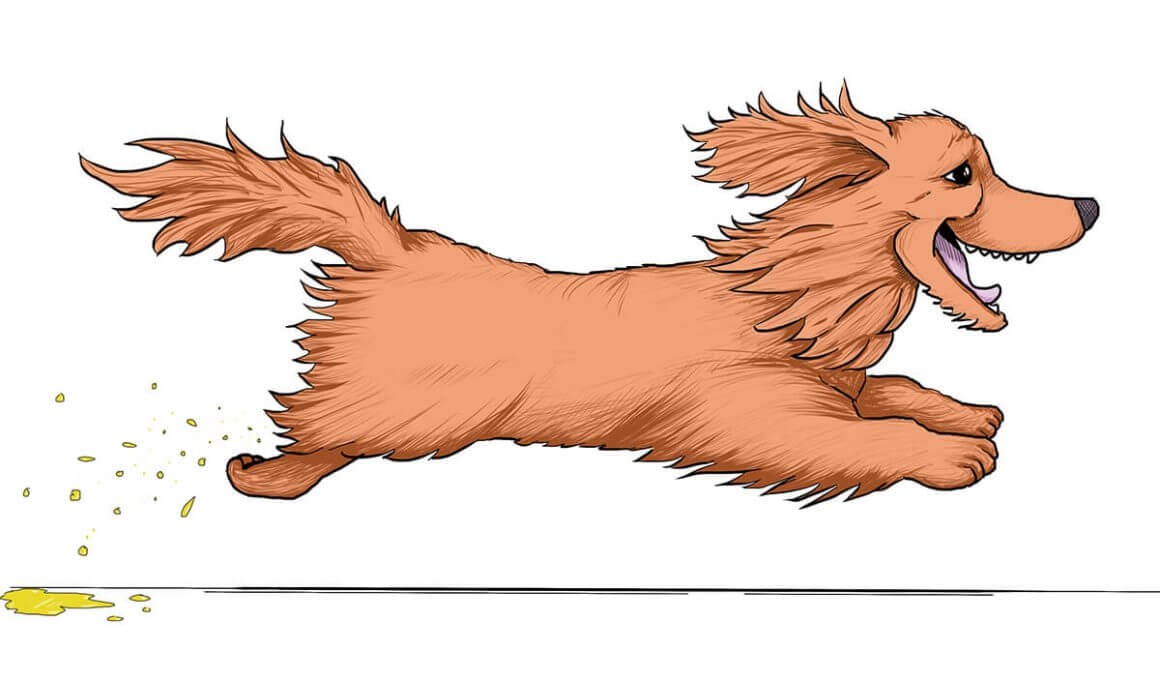By Gary Wilkes
Many years ago I lived with an adorable Mini-Dachshund named Rosey. Every time I attempted to greet her, she urinated. I ignored her, she urinated. I tossed treats on the ground to distract her. She urinated. I had my roommate put Rosey in a crate for about 10 minutes so she couldn’t greet me as I entered the house. She urinated. No matter what we did, Rosey leaked when she greeted people. This type of urination goes by a number of names—submissive urination, submissive wetting, excitement urination and greeting urination. Regardless of what you call it, it’s a big nuisance for dog owners.
At the time I lived with Rosey, I wasn’t a behaviorist. I worked as the manager of a small humane society. One of the members of the board of directors was a long-time Westie breeder. She gave me my first hint about how to fix this problem—treats. Mary Lou Ludlow said that dogs can’t eat and pee at the same time. She recommended that I toss a bunch of treats on the ground when I entered the house. As with many home-grown solutions, this one “kinda” worked. When she took the treats, she seemed to forget about wetting. The problem was that Rosey preferred greeting to eating. When I would throw the treats in front of her, she would simply make a beeline past the treats to squat right in front of me and tinkle. This was not exactly what I hoped for.
The next suggestion I got was from a trainer who told me that if you could keep the dog away from you for a couple of minutes, the drive to greet with a tinkle would fade and you could solve the problem. The recommended tool was a kiddy gate. We dutifully got a kiddy gate to block Rosey from getting to me too fast. Again, it kinda worked. The result was identical to using the crate. When I finally went through the kiddy gate, it triggered Rosey’s drive to greet me and she would dutifully rush forward and squat.
If you’d like to have something else to try, here’s a different take on Mary Lou’s strategy that has some advantages beyond just flinging food around.
First, get a clicker. An inexpensive “box clicker” is perfect for this task. Now, associate the clicker with food. That is easily done. Say ‘sit’. If the dog sits, click the clicker and drop a treat on the ground. If you suspect the dog might be afraid of odd noises, put the clicker in your pocket at first. When the dog happily wags its tail when it hears the click, you are good to go.
Controlling the Behavior:
Mary Lou’s suggestion focused on triggering a food response to compete with submissive urination. That can work, but the method is without form or structure. Once you add the clicker, something interesting happens. One of the functions of the clicker is to end the behavior. The dog learns that everything up to the click is to be remembered and can lead to a tangible treat. To use the tool in greeting, here are the key factors:
1) Find the threshold where the behavior is triggered.
If the submissive urination occurs consistently at three feet, you need to know that.
2) Click before the dog hits the threshold.
Start clicking and tossing a treat outside the three foot zone. Over a series of repetitions, you’ll notice that the dog actually stops coming closer than three feet. The dog has learned to go to a particular spot to get the reward.
3) Do multiple repetitions on each greeting.
Each time you do a greeting, do multiple repetitions with clicks and treats. Do more reps even if the dog wets at some point in the process.
4) Add a cue that tells the dog what’s coming.
Start using a specific phrase to go with greetings. You can say something like “look who’s here” or “company” – any phrase will do as long as it’s the same pattern every time.
5) Have the dog hungry when doing training sessions so the food is more important than normal.
6) Repeat, repeat, repeat.
Controlling a simple physiological reaction can be the secret to reducing or eliminating submissive urination. You’ll note that I said “reducing or eliminating.” Sometimes the best you get is a reduction. You can also reduce the intensity of the behavior by doing the things most commonly suggested. This includes not bending over top of the dog. Sometimes merely squatting down and turning sideways will reduce the behavior. Other things include not touching the dog at the withers, avoiding eye contact and, as a last resort; confining greetings to outdoors—a major inconvenience, but not as inconvenient as cleaning up a mess.
As we all know, most dogs grow out of submissive urination as they mature. With puppies, I don’t worry about it too much. Once an animal hits 18 months it’s probably a part of their mature personality and may warrant taking the time to try to fix it. While you may not have this problem, some of your clients do. Every time you can provide them with purposeful and beneficial advice about their dog’s behavior, you gain credibility as their go-to source for their dog.
